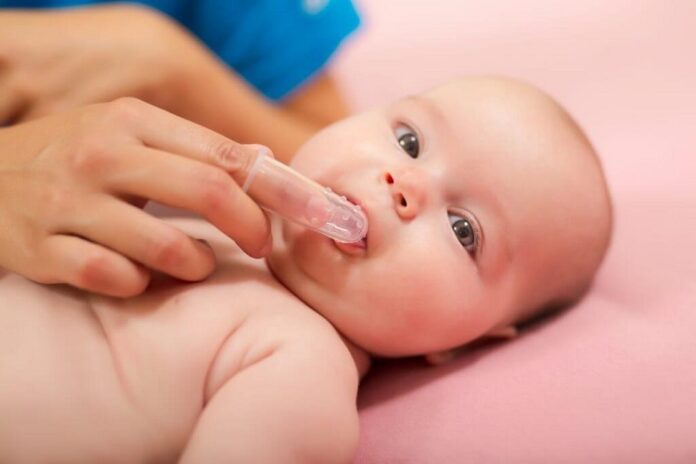A child’s first set of teeth is formed in the womb, from the fifth month of pregnancy until full term. Some babies are born with a few teeth. Others start to get them in about six months. By the time they are 2 and a half years old, most children already have a complete set of primary teeth. From the day he gets his first tooth, what your child eats is of great importance. Eating the right food is only half the battle. A great deal depends on brushing and dental care.
Table of Contents
0-6 Months
A newborn has at least 20 invisible teeth developing in his jaws. between birth and six months, 10-12 permanent teeth will develop. In some cases, a child may be born with a tooth, and it’s very loose.
6-24 Months
The lower central incisors will erupt first followed by the lower lateral incisors. By 12 months, four lower and upper incisors will develop, and within the next year, the rest of the primary or ‘milk’ teeth will erupt.
2-3 Years
All of your baby’s milk teeth will have formed and up to 28 permanent teeth are developing within the jaws. Fever may develop while your child is teething. Don’t worry if your child is a late teether. As long as your doctor is satisfied with his condition, lateness is not something out of the ordinary.
Teething
There are several remedies to relieve your baby’s discomfort while he’s teething:
- Something to Chew.Some teethers are filled with water while others are filled with gel-like liquid. These types can be kept in the fridge to cool. Chewing on icy objects will provide baby relief from sore gums. but let the teethers stand a while after retrieving it from the fridge as extremely cold teethers have been known to burn baby’s lips. With teethers, watch out also for any sharp edges and make sure that the liquid filling is non-toxic and the teether is unbreakable. Alternatively, you could give him a carrot stick with the thin end sliced off.
- Something to Rub Against.Rubbing your fingers firmly on the gums will bring relief though your baby may not appreciate the intrusion at first.
- Something Cold To Drink.Give your baby some icy cold water to drink. This will also help in increasing the baby’s fluid intake that he might have lost through drooling.
- Something Cold To Eat.Chilled yogurt for example may be more appealing than warm food.
- If nothing else works, Paracetamol may be the answer but check with your doctor for the right dosage. There are also products containing benzocaine, a local anesthetic, which when rubbed on the gums helps relieve irritation.
Brushing Baby’s Teeth
Start brushing your baby’s teeth the day the first one appears. There are gum brushes available to help you clean baby’s gums. Alternatively, you can apply a bit of a child’s toothpaste on your finger and rub it on your baby’s gums. You could also use moist lint, a clean facecloth, or a cotton-tipped swab.
You can also buy a small baby-sized toothbrush with multi-tufted nylon bristles. Never buy a hard brush as it can damage enamel and gums. Clean with a gentle scrubbing action and don’t forget to include the gums where particles of food collect.
Introducing Your Child To The Dentist
At the age of 2, you can introduce your child to a dentist. It’s imperative that you find one who takes the preventive approach and the time to teach your child proper oral hygiene and the importance of such practices. Visit the dentist every six months unless he has problems in between so that any problems can be detected before they develop into serious ones.




